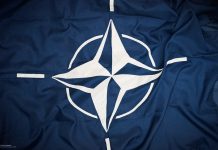
NATO Secretary General Jens Stoltenberg has affirmed ongoing deliberations within the alliance regarding the potential augmentation of nuclear deployments. Stressing the imperative of a visible nuclear posture, Stoltenberg underscored the need to signal deterrence to adversaries. Operational specifics such as exact warhead numbers were not disclosed, but consultations on this matter were characterized as crucial.
Highlighting China, Russia, and North Korea as primary challenges, Stoltenberg noted a departure from NATO’s traditional focus by referencing efforts aimed at countering China, citing Beijing’s impact on Western strategies against Russia.
Anticipating China’s nuclear arsenal growth, Stoltenberg projected its near parity with the U.S. and Russia by the 2030s. Regarding NATO’s nuclear capabilities, he detailed U.S. updates to European-based nuclear weapons and upgrades to allied aircraft designated for nuclear missions.
In addition to the nuclear powers within NATO, Stoltenberg acknowledged that five other member states—Belgium, Germany, Italy, the Netherlands, and Turkey—have arrangements to access U.S. nuclear weapons in conflict, a situation that has stirred controversy for potential non-proliferation treaty violations.
The upgrade of these states’ nuclear strike capabilities is proceeding with the introduction of advanced fighter aircraft. Turkey’s recent acceptance of F-16 Block 70/72 fighters and the deployment of F-35 stealth fighters by Western European nations signal significant advancements. The Netherlands, for instance, has transitioned its nuclear attack role to F-35s, marking the first deployment of a European stealth fighter unit for such missions.
With increasing procurement of F-35s by European nations, the prospect of additional B61-12 nuclear warheads becoming available for shared deployments across the continent is on the horizon, potentially expanding the nuclear-capable fighter units within NATO.




